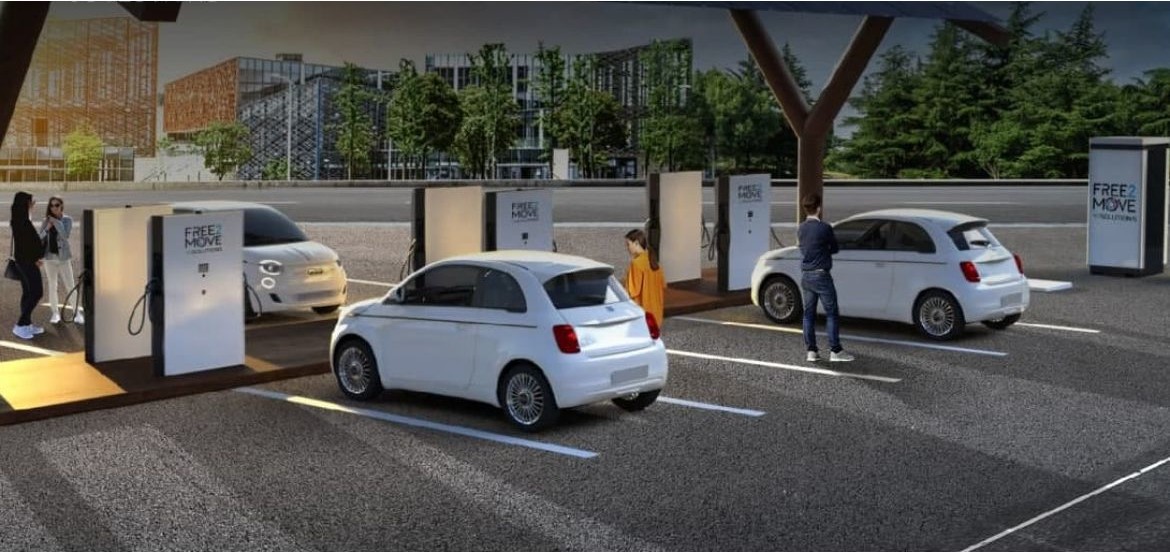Stellantis is a world leader company in automotive and they offer clean, connected, convenient and secure solutions for mobility. “Stellantis” is the name of the holding company resulting from the merging of FCA (Fiat Chrysler Automobiles) and Groupe PSA. Stellantis galaxy includes 14 brands such as Fiat, Citroen, Jeep, Peugeot, Lancia, DS, Alfa Romeo, Opel, Maserati and many others. As shown in the video that was published on May 4th 2021 (https://www.youtube.com/watch?v=QhSYDGEfkKM&t=3s), Stellantis always aims for the top thanks to the work of more than 300,000 employees coordinated by the ideas of the brands that have already made the history of mobility. All of this is fueled by a sound spirit of competitiveness and a fun environment where strength meets talent and experience.
The Global e-Mobility Business Unit, inside Stellantis, works to support at 360° the launch of all the new electrified products Stellantis is investing on. Its objective is to research and find innovative, easy and convenient solutions to convince clients to choose electric mobility. It follows three main strategic pillars, with a customer oriented approach:
- Innovation: look to the future and think about distinctive services for EV customers.
- Cooperation: partner up with sectors leaders to create a whole and competitive ecosystem of services.
- Information: share knowledge on new mobility technologies, highlighting their benefits and opportunities.
With the e-Mobility Business Unit, Stellantis leads the transition towards the mobility of the future, creating an innovative ecosystem of services and setting-up strategic partnerships to create value for its customers and the Group itself.
e-Mobility: a look at the future
Mobility is about to enter a new era: electric mobility (or e-mobility) encompasses the transport system and infrastructure that uses electricity as the primary source of energy required for movement. The use of electricity as primary “fuel” is made possible thanks to high-voltage batteries that store the energy and provide it to the wheels through an electric motor (that converts electrical energy into mechanical energy).
In this area, Stellantis’ brands offer innovative and sustainable solutions to meet the ever-evolving needs of their clients. The goal is to face and overcome the challenges that are laid on the path towards electric mobility and to support the diffusion of electric vehicles globally.
One of the main challenges is to increase the energy capacity of the batteries, to secure a high range keeping the cost of the battery low.The customers still feel the so-called “range anxiety” and so it is key to provide all the customers with a vehicle range that satisfies their needs. In parallel, the challenge focuses on the availability of a wide charging infrastructure, that has to offer the possibility to charge everywhere in public, with high charging speed and a standardized customer experience.
Stellantis and the “Vehicle-To-Grid” (V2G) project
The Vehicle To Grid (V2G) project represents one of the most interesting opportunities offered by the increase in the number of electric vehicles in cities, and by the possibilities created by smart grids. V2G technology allows the two-way energy exchange between the vehicles and the electrical grid. This means that it will be possible to both charge your vehicle and supply energy to the grid, when needed. A pilot project was launched last year in Torino by Stellantis, NHOA (former ENGIE EPS) and Terna at the Drosso logistic hub in Mirafiori (near the location of the Annual Conference 2022). This project consists of a parking lot equipped with multiple V2G charging stations where some New 500 electric (that have just left the production plant and will be soon shipped to the dealers) are connected to stabilize the electrical grid. The first phase of construction consisted in the installation of 32 V2G charging stations that allowed up to 64 New 500 to be connected to test the technology. In the next months, up to 560 electric vehicles will be connected and the Drosso project is supposed to become the biggest infrastructure of its kind in the world. The second phase of the project will be heavily influenced by the market: the goals will be to provide services to Terna’s electrical grid and grant a positive balance for FCA and NHOA.
In partnership with ENGIE Italia, a protective roof will be built over the V2G parking lot and it will fit about 12,000 photovoltaic panels that will provide clean electricity to the production and logistics buildings: this installation will be able to generate more than 6,500 MWh of electricity and will therefore save more than 2,100 tons of CO2 that would otherwise be emitted every year. Indeed, this project represents an important contribution to the decarbonization of the industry sector.


The e-Mobility Business Unit embraces the present significance of electric mobility, redefining transportation. It fosters innovation, infrastructure, and sustainable practices. Electric mobility isn’t just a future prospect; it’s a current reality shaping transportation dynamics, focusing on efficiency and eco-conscious choices for a better tomorrow.